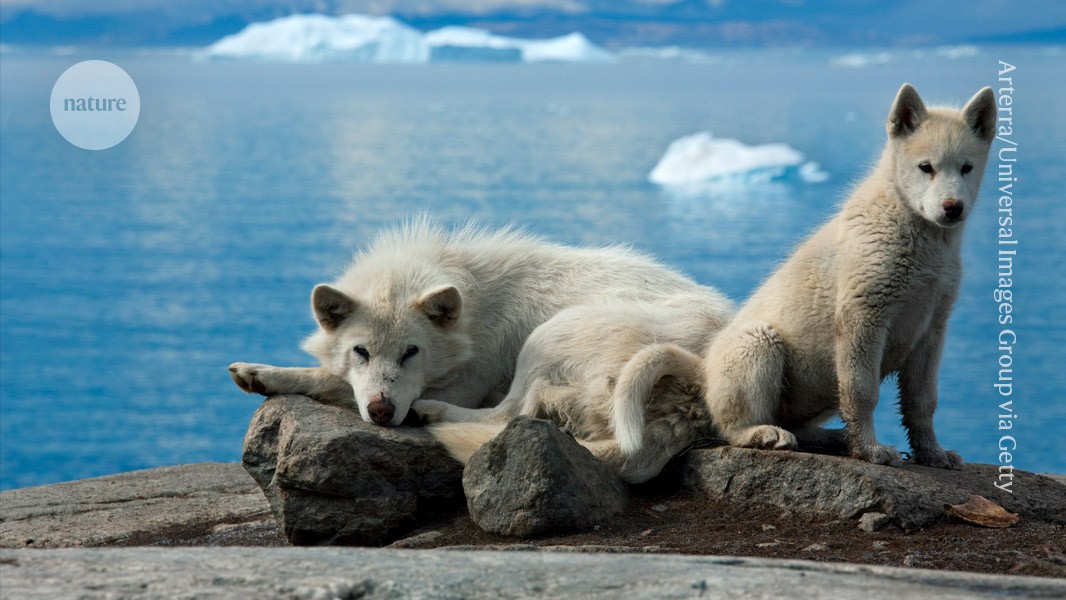Despite their wolf-like appearance, Greenland dogs do not have especially high levels of wolf DNA.Credit: Arterra/Universal Images Group via Getty
Sledge dogs in Greenland do not share much of their DNA with wolves despite their similar appearance, a genome-wide study of the ancient breed has found.
The research, published on 10 July in Science1, explores sledge dogs’ genetic ancestry and reveals the migration patterns of dogs and their human owners over hundreds of years. The insights could be used to help preserve the dwindling modern-day population of these dogs.
Genes unleashed: how the Victorians engineered our dogs
Greenland dogs — also known as Qimmit — have been kept by Inuit people in the country for nearly 1,000 years, hauling sledges to transport people across the snowy landscape. Although the tradition of dog sledging continues, the number of Qimmit in Greenland is declining, dropping from 25,000 in 2002 to just 13,000 in 2020 as a result of reduced ice and snow cover, urbanization and competition with snowmobiles.
“I was attracted to the idea of dogs and humans, the parallel movements and migrations that they have undergone together, and looking at the influence that they’ve both had on one another,” says study co-author Tatiana Feuerborn, a postdoctoral research fellow at the National Institutes of Health in Bethesda, Maryland. “The Inuit and the dogs, like their histories, are just so intrinsically tied together.”
Historical samples
Feuerborn and her colleagues collected DNA samples from the remains of ancient dogs found at archaeological sites, in museum collections and in items of clothing made of fur or bone, which were up to 800 years old. They compared these samples with DNA collected from living Qimmit across 17 towns and villages in Greenland, as well as with previously published genomes for other dog breeds.
Despite the challenge of “poor preservation of the DNA in the remains”, Feuerborn says the team was able to fully sequence 92 modern and ancient genomes to explore the variations and diversity exhibited by the dogs over time and across regions.
Big dog, little dog: mutation explains range of canine sizes
One surprising finding was the absence of recent wolf ancestry in the Qimmit, despite their wolf-like appearance and historical records detailing the hybridization of dogs and wolves in Greenland. “People talk about how they’ve bred the dogs and the wolves, so we were shocked to not see this,” says Feuerborn.
There was also minimal European ancestry in today’s Qimmit, which are more closely related to huskies and malamutes — breeds that originated in Northeast Asia. “I did find it very surprising that even post-European contact, a lot of these dogs have really limited amounts of European gene flow,” says Kelsey Witt Dillon, a geneticist at Clemson University in South Carolina.

